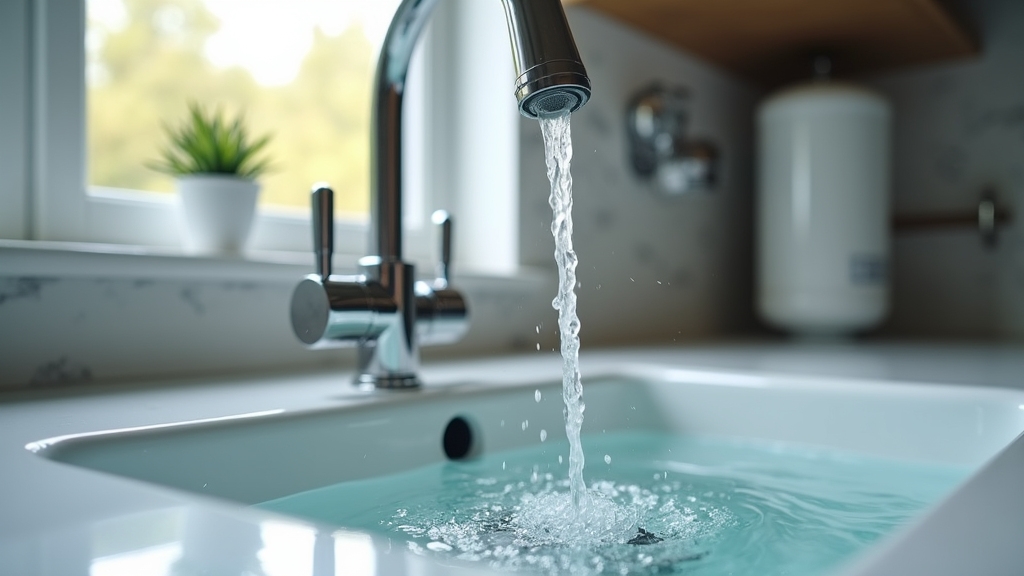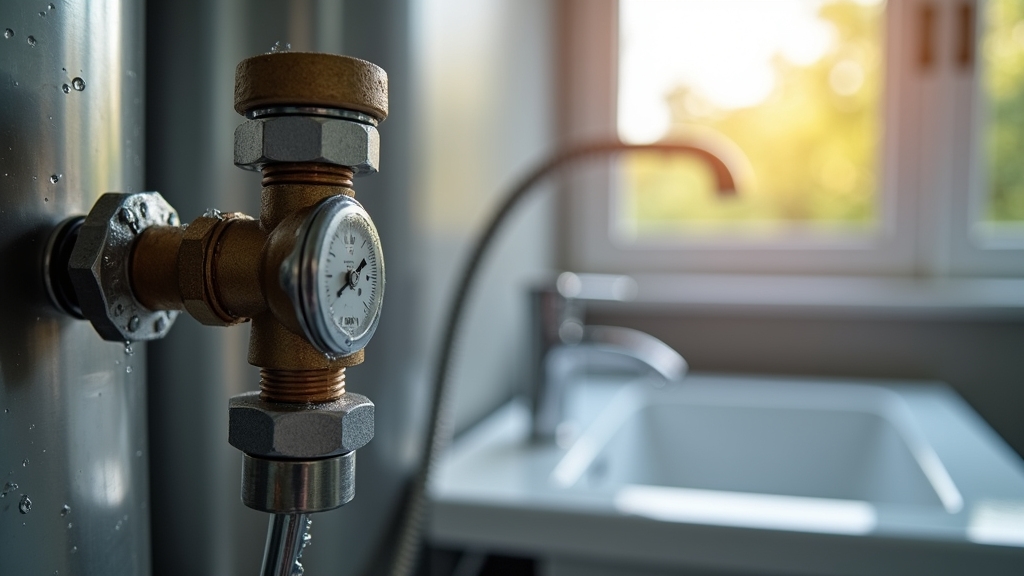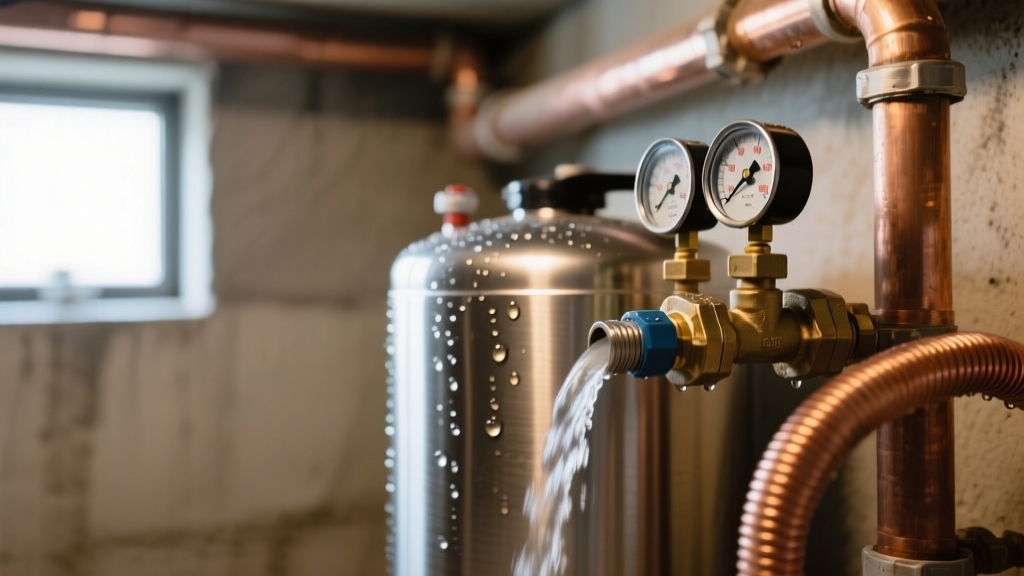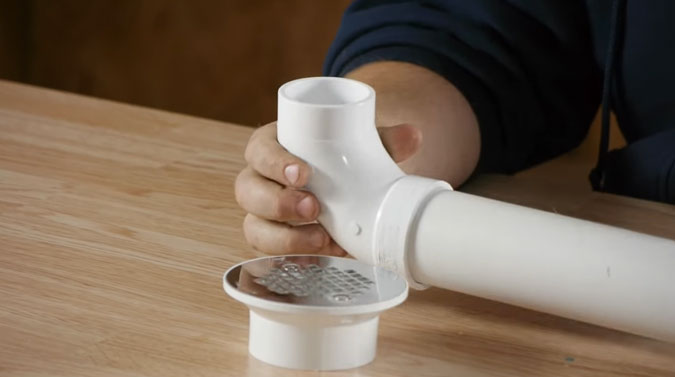Yes, a water softener can affect your water pressure, especially if it’s undersized, clogged, or poorly maintained. Mineral buildup in the resin bed or salt bridges can restrict flow, causing pressure drops.
However, well-designed systems minimize resistance and maintain stable pressure. Regular upkeep like cleaning filters and managing regeneration cycles helps you avoid issues.
If you notice pressure loss, systematic testing can pinpoint whether your softener is the cause. Exploring these factors can clarify how softeners impact pressure.
Key Takeaways
- Water softeners can cause pressure drops if undersized or clogged with mineral buildup restricting flow.
- Proper maintenance, like cleaning resin beds and removing salt bridges, prevents pressure loss.
- Using the bypass valve to compare pressure helps diagnose softener-related flow issues.
- Advanced resin and optimized valves minimize resistance, maintaining near-constant water pressure.
- Softened water reduces scale buildup, preserving pipe diameter and supporting stable pressure over time.
How Water Softeners Work in Relation to Water Pressure?
Although water softeners primarily focus on ion exchange to remove hardness minerals, they’re designed to maintain your household water pressure by minimizing flow resistance through the resin tank.
The resin beads, saturated with sodium ions, are porous and spaced to allow water to pass with minimal obstruction. As unsoftened water flows through the resin bed, the system operates without moving parts, relying on gravity and household pressure, similar to a filter. This process relies on the resin beads to hold sodium ions ready for exchange.
Proper sizing of the resin tank and matching the system’s flow rate to your household demand ensures negligible pressure loss. Inline pumps, which are designed for higher flow rates, help maintain consistent pressure in larger water systems.
Regular maintenance prevents bead compaction or clogging that could increase resistance. Consequently, when correctly installed and maintained, your water softener supports stable pressure throughout the softening process without creating detectable flow restrictions.
Common Causes of Reduced Water Pressure Due to Softeners
When your water softener causes reduced water pressure, it usually stems from system undersizing, resin bed clogging, filter blockages, salt-related issues in the brine tank, or escaped resin beads obstructing fixtures.
An undersized softener can’t handle your household’s water demand, causing chronic low pressure. Proper sizing is essential to ensure adequate pressure and mineral removal. Upgrading to a larger or properly sized softener can significantly improve flow and system performance by matching the water demand of your household.
Mineral buildup in the resin bed restricts flow, reducing downstream pressure and softening efficiency. Sediment filters clogged with debris compact and block water flow, necessitating regular cleaning. Routine maintenance such as cleaning or replacing filters prevents clogging that directly causes pressure losses.
Salt bridges or salt mushing in the brine tank hinder regeneration, indirectly diminishing pressure by lowering softening performance. Finally, damaged resin beads can escape and block faucets or showerheads, causing localized pressure drops.
Each cause demands targeted maintenance or system adjustments to restore ideal flow and pressure throughout your plumbing.
Identifying Signs That Your Water Softener Is Affecting Pressure

Reduced water pressure linked to your water softener often presents distinct symptoms you can observe and measure. Proper maintenance, including draining the water from the system, helps prevent pressure issues.
You might notice weaker water flow at faucets and showerheads, especially when multiple fixtures run simultaneously. Appliances like washing machines may fill slower, and pressure dips may align with softener regeneration cycles.
If pressure remains low despite checking for plumbing leaks or clogs, suspect the softener. Use the bypass valve to divert water away from the softener and see if pressure improves.
Additional indicators include sputtering showerheads, trickling faucets, and unusual noises from the softener unit. Inspect the brine tank for salt bridges or abnormal water levels, and monitor resin bed condition.
Engaging the bypass valve to restore normal pressure confirms the softener’s role. Use a pressure gauge to detect drops below 30 psi during operation, differentiating softener-related issues from external plumbing faults.
The Positive Effects of Water Softeners on Plumbing and Pressure
Water softeners do a great job of preventing mineral buildup in your pipes. They achieve this by swapping out calcium and magnesium ions, which helps keep the diameter of your pipes consistent and protects surfaces from hard water stains.
When you reduce scaling, you’re not just cleaning things up; it also means smoother water flow. And who doesn’t want that? Plus, maintaining clear conduits helps keep your water pressure stable throughout your plumbing system. This is because mineral buildup acts like arterial plaque, restricting water flow and reducing pressure.
So, with a water softener, you can really count on your water delivery to be both efficient and reliable. It’s a win-win for your home!
Mineral Buildup Prevention
Although mineral buildup often goes unnoticed until it causes problems, water softeners actively prevent calcium and magnesium ions from accumulating in your plumbing system.
Through ion exchange, hard minerals are replaced with sodium or potassium ions, effectively reducing scale formation. This process minimizes limescale, primarily calcium carbonate, which otherwise narrows pipe diameters and risks clogs.
By maintaining the internal diameter of pipes, water softeners preserve ideal flow capacity and reduce pressure drops linked to mineral deposits. Sediments build up inside pipe walls can lead to clogs and reduced water flow, but softeners help prevent this issue by controlling mineral accumulation pipe clogs.
Regular maintenance and cleaning routines further enhance the efficiency of these systems by preventing debris buildup. Additionally, softened water limits scale accumulation on fixtures and valves, preventing corrosion and extending plumbing lifespan.
This proactive mineral control decreases the frequency of descaling and cleaning, resulting in lower maintenance demands and reduced emergency repairs.
Ultimately, water softeners enhance the durability and efficiency of your plumbing infrastructure by controlling mineral buildup before it impairs system performance. Proper installation and monitoring of the pressure differential ensure that the water softener and plumbing system function optimally together.
Consistent Water Flow
When water softeners effectively remove calcium and magnesium ions, they prevent mineral deposits from narrowing your pipes and fixtures. This ensures steady water flow and stable pressure throughout your plumbing system. In the UK, the minimum water pressure typically starts at 1.0 bars at the property boundary, providing a baseline for consistent water delivery.
By maintaining pipe diameter and preventing scaling in showerheads and faucets, softeners avert common flow restrictions. Properly sized softeners match household water demands, avoiding pressure drops caused by undersized units. In some cases, integrating pump power requirements can help optimize system performance.
High-quality systems with advanced resins and optimized valves minimize mechanical resistance, sustaining near-constant flow rates. Regular maintenance, including resin bed cleaning and salt bridge removal, prevents clogging that could reduce pressure.
Diagnosing Water Pressure Problems Linked to Softeners

To figure out if your water pressure is dropping, start by measuring the flow rates at different faucets. Just keep an eye out for any reductions after you’ve installed the softener. Battery backup systems are known for their quiet operation, which means they won’t add to noise that might mask pressure issues.
It’s a good idea to use the bypass valve too. This lets you divert the water around the softener, so you can really see how it affects the flow. Many softeners include a bypass valve specifically for this purpose.
If you notice that the pressure improves when you’re testing with the bypass, that’s a strong indication that the softener or some of its components might be the culprit behind the issue.
Identifying Pressure Drops
How can you accurately identify if your water softener is causing pressure drops in your home? Start by checking for consistent low pressure across multiple fixtures rather than isolated points.
Note if weak flow coincides with peak usage or softener regeneration cycles, as these patterns suggest system-related issues. Inspect for salt bridges or mushing in the brine tank, which disrupt flow and pressure.
Examine resin beds and sediment filters for mineral buildup or clogging that restricts water passage. Assess whether pressure improves when bypassing the softener, confirming its role in the drop.
Additionally, verify no leaks, valve faults, or pipe corrosion adjacent to the softener, as these can mimic pressure loss. Accurate identification requires systematic pressure measurement and physical inspection to isolate softener-specific causes.
Mineral buildup and corrosion from hard water can impair valve function and contribute to pressure problems in plumbing systems.
Softener Bypass Testing
Confirming whether your water softener causes pressure drops requires isolating the unit through bypass testing. This process involves activating the bypass valve, lever, push-button, or manual, to reroute water flow around the softener. Bypass valves are usually U-shaped and labeled with directions such as In, Out, Bypass to indicate valve positions.
Then, you measure water pressure at a fixture, comparing it to normal readings. It is important to consider water conditions as abrasive particles or sediment buildup inside the softener may contribute to pressure loss.
To accurately diagnose, follow these steps:
- Locate and engage the bypass valve properly.
- Measure and document pressure changes with the softener bypassed.
- Return the system to normal operation after testing.
If pressure improves markedly, the softener likely causes the drop. Minimal change points to other plumbing issues.
This precise test helps you pinpoint whether clogged resin beds, malfunctioning valves, or sediment buildup inside the softener impact your water pressure.
Maintenance Tips to Prevent Pressure Drops in Water Softeners
Although water softeners effectively reduce hardness, maintaining consistent water pressure requires diligent upkeep. You should regularly inspect and clean the resin bed and filters every 2-3 months to prevent mineral buildup that restricts flow.
Choosing a unit with energy-efficient technology can also support consistent performance by reducing strain on your water system. Manage regeneration cycles carefully to avoid pressure dips caused by over- or under-regeneration.
Keep salt levels ideal and clear any salt bridges in the brine tank to ensure efficient softening. Regular maintenance also helps prevent clogged resin beds, which can limit water flow and reduce pressure over time. Finally, inspect pipes and system components for blockages or damage.
| Maintenance Area | Key Action | Impact on Pressure |
|---|---|---|
| Resin Bed & Filters | Clean/replace regularly | Prevents clogging |
| Regeneration Cycles | Optimize frequency | Balances flow consistency |
| Salt & Brine Tank | Remove salt bridges | Maintains regeneration flow |
| Pipe Inspection | Check for blockages | Avoids flow restrictions |
| System Capacity | Match usage demands | Prevents chronic pressure drop |
When to Seek Professional Help for Softener-Related Pressure Issues?
If you notice persistent low water pressure despite regular maintenance, it’s time to seek professional help for your water softener. Ignoring these signs can lead to worsening system performance and costly damage. Regularly checking the pressure gauge helps identify pressure issues early, which professionals can address during service.
You should contact a technician if you encounter unusual noises or visible leaks around the softener or plumbing, indicating mechanical faults. Inconsistent water softening or hardness returning despite regeneration cycles is another sign.
Frequent or abnormal system cycling beyond your troubleshooting capabilities also warrants professional assistance. Professionals perform detailed diagnostics, including pressure measurements, resin tank inspections, and control valve evaluations to pinpoint issues like mineral clogging or valve failures.
Prompt expert intervention restores ideal pressure, prevents secondary damage, and ensures your system operates efficiently within local water conditions. Don’t delay repairs; precise adjustments or replacements may be necessary to maintain reliable water flow and protect your household plumbing.
Frequently Asked Questions
Can Water Softeners Affect Water Temperature Along With Pressure?
Yes, water softeners can affect both water temperature and pressure. During the regeneration cycle, you might notice temporary fluctuations or brief loss of hot water due to disrupted flow.
Pressure drops can result from clogged resin beads or undersized units, which also influence temperature consistency. Proper sizing and maintenance prevent these issues, ensuring steady water flow and stable temperature.
Environmental factors like cold weather can further impact softener efficiency and water temperature stability.
Do Water Softeners Impact Water Pressure in Multi-Story Homes Differently?
You face pressure drops, you face flow restrictions, you face uneven water distribution. Yes, water softeners impact pressure differently in multi-story homes. Due to longer vertical pipe runs and increased system complexity, improperly sized or clogged softeners amplify pressure loss on upper floors.
To maintain consistent pressure, guarantee your softener matches household demand, inspect resin beds regularly, and use bypass valves to isolate issues. Proper sizing and maintenance are critical for multi-level water systems.
How Does Water Pressure From a Softener Compare to a Reverse Osmosis System?
You’ll notice that water softeners maintain higher pressure with minimal drop (5-15 PSI) across the whole house, handling large flow volumes efficiently.
In contrast, reverse osmosis systems cause a more significant pressure drop due to membrane resistance, affecting only point-of-use outlets.
RO units often require booster pumps to sustain adequate pressure, especially below 40 PSI feed pressure. Softener pressure loss is less severe and more consistent than RO filtration pressure reduction.
Can Water Softeners Cause Pressure Fluctuations During Regeneration Cycles?
When a homeowner noticed sudden drops in water pressure every night, they linked it to their softener’s regeneration cycle. Yes, water softeners can cause pressure fluctuations during regeneration because the system diverts water to clean resin beads.
This temporarily reduces flow. If your regeneration settings are too frequent or resin clogs develop, pressure dips can persist. Adjusting cycle frequency and maintaining components helps stabilize your water pressure effectively.
Are There Specific Brands Known for Minimizing Pressure Loss in Softeners?
Yes, you’ll find brands like PurASoft, Culligan, Chandler, Rainsoft, and SpringWell excel at minimizing pressure loss.
They feature NSF 44-certified resins, optimized valve designs, and high flow rates (up to 20 GPM) that sustain strong water pressure.
SpringWell’s systems, for example, maintain 12-20 GPM without noticeable drops. If you want minimal pressure impact, focus on these brands’ serviceability, warranties, and efficient salt usage for consistent performance.
Balance Basic Maintenance With Expert Support for Best Results
You can confidently control your water pressure by carefully caring for your water softener. Continuous clogging, cartridge complications, or calibration concerns can cause considerable pressure challenges.
Consistent cleaning and scheduled servicing markedly stop sudden slowdowns. Stay sharp for signs signaling softener struggles, and seek specialized support when simple solutions stall.
By balancing basics with professional precision, you’ll preserve peak performance and prevent pressure problems, protecting your plumbing and promoting perfect water flow.


